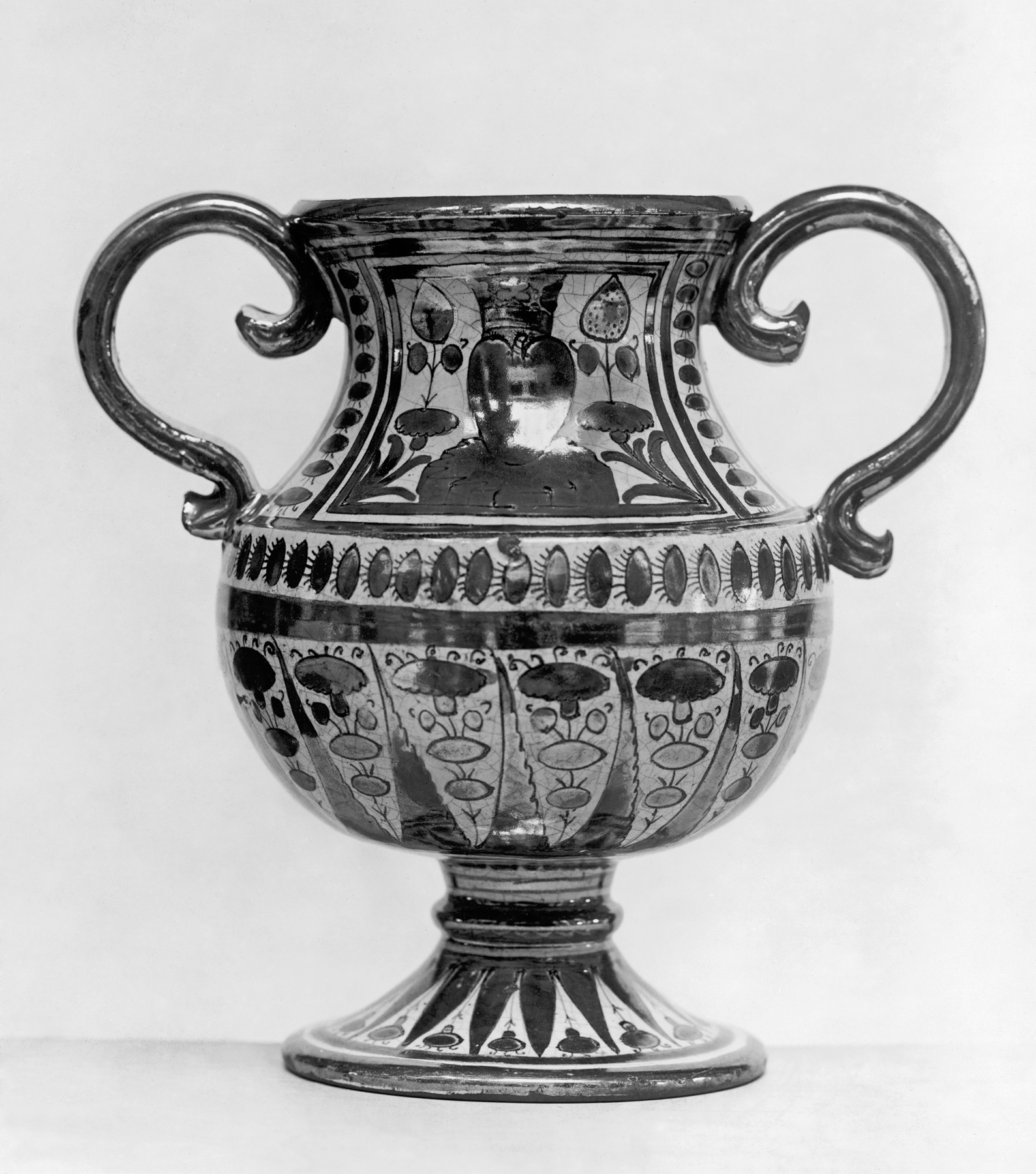Vase with Crowned Heart
(Renaissance Europe )
The ornamentation displayed on this vase is typical of maiolica made in the town of Deruta in the early 16th century. On either side of the vase’s neck, in a four-sided cartouche flanked by ovals, is a crowned heart on an indented base. This motif of a heart topped with a coronet may allude to the vase's original role as a type of love token. A longitudinal band of ovals decorates the waist, and on the lower part of the vase, branches of ovals alternate with serrated leaves. The foot includes a pattern of downward-pointing rays with ovals in between. The geometric shapes and gold luster exhibited on this vase were influenced by the ceramics imported from Spain during the fifteenth century. Italian earthenware had broad appeal and was exported in large numbers for use by the wealthy throughout Europe. This vase once had a conical lid with a finial to allow for easy opening. Though the lid is now lost, the delicate curving handles survive intact to attest to its fragile original shape. For Hispano-Moresque ware, see no. 48.2111; for information on luster glazes, see 48.1320; for more on “maiolica,” see 48.1336.
The ornamentation is typical of Italian tin-glazed earthenware, or maiolica, made in the town of Deruta in the early 16th century. The motif of a heart topped with a coronet may allude to the vase's original role as a type of love token. Italian earthenware had broad appeal and was exported in large numbers for use by the wealthy throughout Europe. It stemmed from the techniques of earthenware developed by Islamic craftsmen in Spain. The name maiolica comes from the fact that the Spanish wares were sent from mainland first to the island of Majorca for export to the rest of Europe. This vase once had a conical lid with a finial to allow for easy opening.
Provenance
Provenance (from the French provenir, 'to come from/forth') is the chronology of the ownership, custody, or location of a historical object. Learn more about provenance at the Walters.
Galleria Sangiorgi, Rome, by purchase; Henry Walters, Baltimore, [date of acquisition unknown] by purchase; Walters Art Museum, 1931, by bequest.
Geographies
Italy, Deruta (Place of Origin)
Measurements
10 5/16 x 10 9/16 x 7 1/16 in. (26.2 x 26.8 x 17.9 cm)
Credit Line
Acquired by Henry Walters
Location in Museum
Not on view
Accession Number
In libraries, galleries, museums, and archives, an accession number is a unique identifier assigned to each object in the collection.
In libraries, galleries, museums, and archives, an accession number is a unique identifier assigned to each object in the collection.
48.1513


